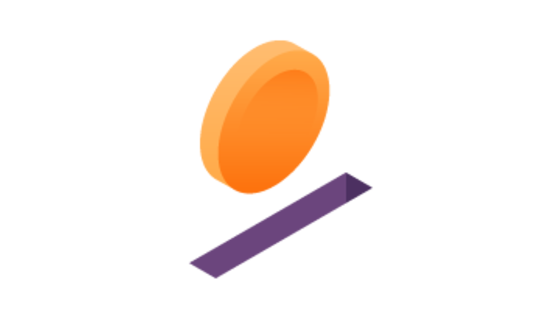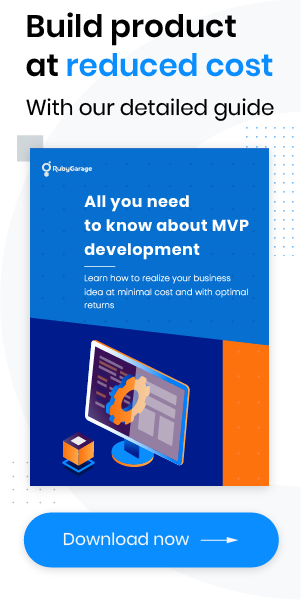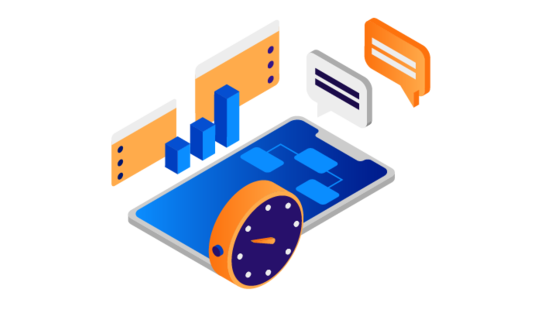-
Product Management
Software Testing
Technology Consulting
-
Multi-Vendor Marketplace
Online StoreCreate an online store with unique design and features at minimal cost using our MarketAge solutionCustom MarketplaceGet a unique, scalable, and cost-effective online marketplace with minimum time to marketTelemedicine SoftwareGet a cost-efficient, HIPAA-compliant telemedicine solution tailored to your facility's requirementsChat AppGet a customizable chat solution to connect users across multiple apps and platformsCustom Booking SystemImprove your business operations and expand to new markets with our appointment booking solutionVideo ConferencingAdjust our video conferencing solution for your business needsFor EnterpriseScale, automate, and improve business processes in your enterprise with our custom software solutionsFor StartupsTurn your startup ideas into viable, value-driven, and commercially successful software solutions -
-
- Case Studies
- Blog
How Do Free Mobile Apps Make Money?
Do you have an idea for a free mobile application but you doubt whether it's worth investing? How do free apps make money?
Your doubts are quite clear: the development of a top-notch mobile app requires a lot of time (typically, several months) and, more importantly, money. Before kicking off the development process, you should clearly understand how you’ll recoup your investments and how to make money with apps .
We’ve decided to help you get your idea off the ground and show how exactly you can make money on free apps.
Free Apps Grossing Big Bucks
According to Sensotower, the App Store and Google Play users spent a total of $133 billion on mobile apps and games in 2021, which is 20% up compared to 2020. This is a huge market you don’t want to miss out on
If you think that it’s the paid apps that bring the lion’s share of this huge revenue, you’re wrong. In fact, if you check the list of the top grossing mobile applications (including games) in the Google Play Store and the Apple App Store, you’ll notice they’re all free.
The vast majority of users on all continents prefer free mobile applications. In fact, the number of free app downloads is oerwhelmong. As of January 2022, Statistics of all apps in the Apple App Store are free. 97% of all Android apps in Google Play were available for free.

Developing a free mobile app is definitely the right business strategy.
Before shedding light on how to make money with apps, we’d like to draw your attention to another matter: correct app presentation. Remember that users must be able to quickly find your app and understand what it’s designed for.
Incite User Interest Through Accurate App Packaging
As of the first quarter of 2021, there were 2.22 million apps in the Apple App Store. The competition is really strong!
How many users will find your free mobile app? How many of them will download it? No matter how good your app is and what monetization methods you use, you may still fail to attract customers without a clear app packaging.
Potential users of your app should be able to quickly find it through search in the Google Play Store and the Apple App Store. To make your mobile app visible and easy to find, you should provide it with an attention-grabbing name, an informative description, and screenshots.
Here are tips that will help you create a top-class app description.
Choose a Clear and Catchy App Name
Your mobile app should have a snappy name that reflects its major functions. Though many applications have names that convey nothing about their functionality, your app is likely to attract a lot more users if it has a name that hints at what it does. It’s particularly useful to include keywords in the app name.
For example, let’s look at LINE, one of the most popular non-gaming Android apps on the Google Play Store. As you can see, the full title contains an explanation of what this app does (i.e. it offers free calls and messages):
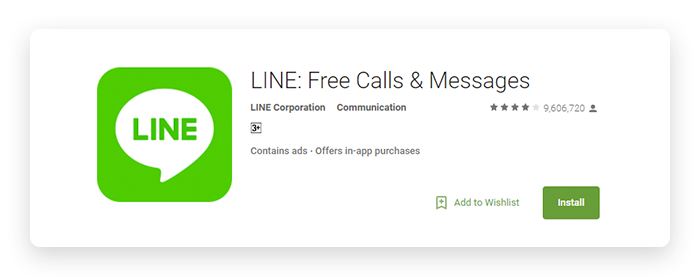
Here’s another example: Hulu for iOS. The full name of this app is “Hulu: Watch TV Shows & Stream the Latest Movies.” With this title, any user can easily see what Hulu is for, namely for watching TV shows and movies:

In general, the name of your app shouldn’t be too long – 100 characters at most. Think carefully about the name, as it’s the first thing people see and pay attention to when they’re considering whether your application is worth downloading.
Come up With an Informative App Description
The next step is to provide your app with a meaningful and informative description.
The first several sentences (up to the “Read More” or “More” buttons) of an app description should give general information and illustrate the app’s main idea. This part mustn’t be long – up to 225 characters. Few people read further, so make sure to tailor this part of the app description to perfection.
Let’s have a look at a great example of a brief yet informative description for Scrummer, a handy planning poker app for Scrum development teams that’s available in the Apple App Store:

In the main body of the description, you should mention what problems your mobile app helps to solve as well as go over its most important functions. Take a look at the description of Google Drive (in the Google Play Store). As you can see, it effectively explains to users what they can do with the help of Google Drive:

Make Eye-Catching App Screenshots
An app’s name and description are important, but users want to know how your app will look on their mobile devices. That’s why you should include several screenshots – and make sure you pick the best.
We recommend that you add some text to your screenshots, describing some functions of your application. Take a look at a screenshot for the LINE app on Google Play:

As you can see, this screenshot shows that the app can work on smartphones, tablets, and smartwatches.
Here are screenshots for the Uber app for iOS:

Note that Uber uses verbs in their screenshot descriptions, which is the correct approach. Verbs are the parts of speech used to describe actions.
People are more likely to act (i.e. to download your free mobile app) if they see verbs.
How to make money with free apps?
Now that you know how to package a five-star app, we can move on to explaining the strategies you can leverage to make money on free apps.
Strategy #1: In-App Purchases
In-app purchases is an extremely popular strategy used by thousands of apps in both the Google Play Store and the Apple App Store. In-app purchases allow users to buy something right in the app.
There are three major types of in-app purchases:
- Consumable. Consumables are products that a user can use only once: for example, virtual money or health points. Such in-app purchases are usually used in mobile games.
- Non-consumable. Non-consumables are features that users buy for permanent use: for example, additional functions or ad blocking (this is how free apps make money without ads).
- Subscriptions. Your mobile application may offer subscriptions that unlock some content or functions for a certain period of time. Subscriptions can be either non-renewing or automatically renewing.

If you consider implementing in-app purchases in your app, we have a great guide on how to build a mobile payment app like Starbucks.
Strategy #2: In-App Ads
Ads are a driving force of the global market. They’re literally everywhere, and mobile apps aren’t an exception. In-app ads are actually tools of affiliate marketing. With in-app ads, you advertise your affiliates’ products (apps, games, etc.) inside your app and get paid if your users interact with those ads.
There are several types of campaigns used in affiliate marketing, so let’s mention the most popular:
- Cost per click (CPC). This model means that you get paid for each click on ads displayed in your mobile application. Typically, a single click is nearly worthless, so revenue is calculated on a cost per mille basis (mille is Latin for thousand).
- Cost per view (CPV). These campaigns are usually applied to video ads. The more times users of your app watch video ads, the higher payout you get.
- Cost per install (CPI). With this model, you get paid whenever a user of your app installs an advertised application.
If you wish to monetize your application through ads, there are many networks to work with, such as AdMob and Flurry. Most ad networks support apps on iOS and Android, as well as on some other mobile platforms. Also, don’t forget to check what kinds of campaigns they offer, since you need to understand what exactly you’ll be paid for.
There are several ways to display ads in your mobile app:
- Banners. Banner ads usually appear at the top or at the bottom of a screen and have some text and graphics. Banners are considered to be relatively unobtrusive, as users are able to keep using your mobile app even if a banner is active. However, banners have low click-through rates (CTR) and heavily depend on brand recognition (users are far more likely to click if a banner advertises some well-known brand).
- Native. Most people don’t like ads and try to block them completely. How can you reach out to the users of your mobile application, then? Use native ads that don’t really look like ads. Native ads are seamlessly integrated into mobile applications, making them subtle but quite efficient.
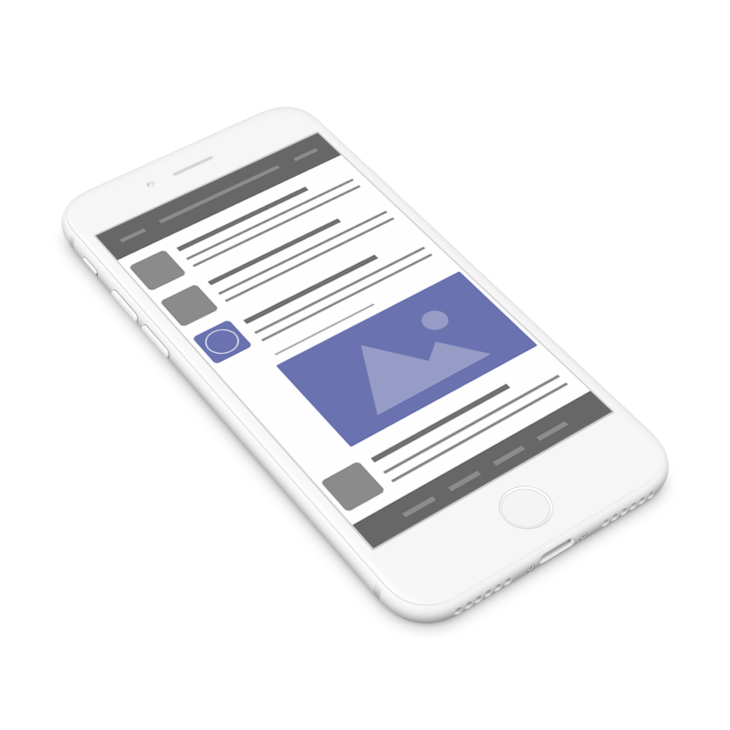
- Videos. According to the report by Smaato, the average CTR of video ads is 7.5 times higher than display ads, so they’re quite effective. Typically, video ads appear automatically when users interact with apps.

- Interstitial. These ads take a whole screen and typically appear when users launch or close an application. However, interstitial ads may also look like pop-ups appearing from time to time.

- Rich media. Rich media ads use multiple methods to reach out to users, including audio, video, text, and more. This type of ads show an average CTR of 2.0% which proves its effectiveness. It is one of the most lucrative ad types.

In-app ads allow you to make money off free apps, but this monetization strategy works well only for applications with big audiences. If your app is a startup, don’t expect it to bring big bucks this way.
Strategy #3: Freemium
To benefit from the freemium monetization strategy, you need a second, paid version of your application. If users like a free version, they’re likely to opt for a paid one that has some extra functions.
With a freemium model, users are typically offered to upgrade an app to a paid version, and if they agree, they’re directed to an app store.
For example, have a look at MX Player, a popular video player available on Google Play. This mobile app has a free version, but it contains ads:

Users are offered a paid version of this app, called MX Player Pro. It’s the same in terms of functionality, but comes without advertising:

This monetization option is quite efficient, but you shouldn’t provide too many functions in your free app; otherwise, few users will shell out for the paid one.
Strategy #4: Sponsorship
Finding a sponsor is a really lucrative monetization model. Usually, it works this way: you create a mobile app that gains quite a lot of users, after which you contact a sponsor company and offer to update the design of your app to match the sponsor’s brand.
There are two types of sponsorship deals: you can either split the revenue with your sponsor or receive a monthly sponsorship fee.
The main difficulty of sponsorship is finding a sponsor. Needless to say, your mobile app should be good enough to be interesting to potential funders.
Strategy #5: Email Marketing
Email marketing has always been and still is a powerful strategy to make money from mobile apps. You can leverage this method and ask the users of your mobile app to provide their emails and, later, send them messages with promotional offers and other engaging content.
Adding a Facebook login option to your free app is a great way to subtly collect user emails. However, give users a chance to cancel email notifications, as this will make your app more credible and people will know they won’t be receiving loads of spam.
Strategy #6: Transaction fees
Many applications operate as marketplaces or aggregators, not selling their own products or services. So how to make money from an app that is free and sells someone else’s products? You should set up transaction fees. Every time a user purchases your app, you’re receiving a fee.
Uber earns enormous profits by selling the rides, Airbnb makes money by arranging rental deals, eBay also makes money on its sellers’ transactions. There can be either fixed or a progressive fee model. First implies a fixed fee regardless of the deal amount, while the second one means you charge higher fees for the bigger deals.
Strategy #7: Crowdfunding
Crowdfunding helps startups raise funds to invest in their product development. You can start making money off an app even before it actually enters the market. According to a recent study from Absolute Reports, the crowdfunding market size is going to grow from $133.4 billion in 2021 to $288 billion in 2028.
By sharing your app idea or MVP on multiple crowdfunding platforms like Kickstarter, Patreon, Indiegogo for free, any startup can raise money from the ones who like your project. Additionally, it is a great way to attract big investors.
Tips for Choosing the Best App Monetization Methods
As you can see, there are many ways you can make money from free apps. You can pick one or opt for several strategies at once. However, there are several handy tips that will help you monetize your free app in the most effective way possible.
Consider the Business Goals of Your Free App
Any application has a business goal, which means it helps its users solve their problems. Therefore, you should select a monetization strategy based on your app’s business purpose.
For example, let’s say you wish to create a cool audio player with lots of sound adjustments. Can in-app purchases be an effective profit generating method? Probably not. Instead, you can opt for ads or offer an ad-free version with a subscription.
Or imagine that you launch an educational app. It can offer in-app purchases, such as access to additional functions or paid tips. Needless to say, such apps can contain ads as well.
Define Your Target Audience
You should clearly realize who you’re creating a mobile app for. Draw a user portrait and decide what functionality users need, how much time they’re likely to spend using your app, and so on. A clear picture of your target users allows you to create an app tailored to their needs.
Though your free app may boast large download numbers, the truth is that only a small part of your users (you may call them the money-spending core) will actually bring you profit by clicking on ads or making in-app purchases. The majority of users won’t spend a cent in your app. You may not like it, but that’s how it is in reality. Therefore, set a goal of attracting as many users as possible and do your best to succeed.
Research Your Competitors
If you’re thinking of launching a mobile application, you should carry out a competitor analysis. How do free apps make money in your niche?Explore the app stores you’re going to offer your free app in and search for similar apps. Next, find out what your competitors offer, what kind of designs they have and, more importantly, what monetization methods they use.
This information will help you learn from your competitors’ experiences and see what mistakes they’ve made so you can make your free app better and more helpful to customers. In the end, a better app means higher profits for you as its creator.
Don't Overuse App Monetization Methods
You shouldn’t make your free app inconvenient for users. If it’s full of ads or in-app purchases, your audience may stop using your app and install a similar one. App creators should always remember that their apps bring profits only as long as people use them.
Your users should feel comfortable when using your app, so be prudent and make all ads and offers in your app as subtle as possible.
Now that you know how free apps make money, you can give your idea a go and turn it into a real-life application.




